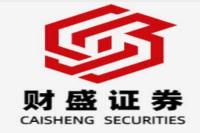Shenzhen's New Distributed PV Grid Integration Standard: A Game Changer for Solar Power
Meta Description: Shenzhen's new distributed photovoltaic (PV) grid integration standard boosts solar adoption, improves grid stability, and accelerates the city's green energy transition. Learn about its key provisions and impact. #Shenzhen #DistributedPV #SolarPower #GridIntegration #RenewableEnergy #CleanEnergy #SmartGrid
This isn't just another local regulation; it's a pivotal moment for Shenzhen's ambitious renewable energy goals and a blueprint for other cities aiming to integrate distributed solar power seamlessly and efficiently. Imagine a city buzzing with clean energy, powered by thousands of homes and businesses generating their own electricity from the sun. That's the vision driving Shenzhen's groundbreaking new standard for distributed photovoltaic (or "PV" for short) systems. This isn't just about plugging in solar panels – it's about creating a robust, reliable, and scalable smart grid that can handle the influx of renewable energy while maintaining grid stability and safety. This comprehensive guide delves deep into the specifics of this new standard, explaining its implications for developers, homeowners, businesses, and the environment. We'll dissect the key provisions, analyze its potential impact, and answer your burning questions about this exciting development. Get ready to uncover the technical intricacies, policy implications, and future prospects of this landmark achievement. This isn't just a story about a new standard; it's a story about Shenzhen's commitment to a sustainable future, a future powered by the sun. Prepare to be enlightened!
Shenzhen Distributed PV System Integration Standard: A Deep Dive
The Shenzhen Municipal Market Supervision Administration's newly implemented standard, officially titled 《分布式光伏发电系统接入电网技术规范》, sets a new benchmark for integrating distributed photovoltaic (DPV) systems into the city's power grid. Effective November 1st, this isn't just a set of rules; it’s a roadmap for a cleaner, more sustainable Shenzhen. The overarching goal? To streamline the process of connecting DPV systems, ensuring grid stability, and ultimately, accelerating the adoption of solar power. Think of it as the ultimate guide to making sure all those rooftop solar panels play nicely with the city's electricity infrastructure – a crucial step in building a robust and resilient smart grid.
This standard is a direct response to Shenzhen's aggressive renewable energy targets. By 2025, the city aims to add 1.5 million kilowatts of new PV capacity, reaching a whopping 2.4 million kilowatts by 2030. That's a massive undertaking, and this standard provides the much-needed framework to achieve these ambitious goals in a safe and efficient manner. With over 629 DPV projects connected to the grid this year alone (a 70% year-on-year increase!), the need for clear guidelines is abundantly clear.
Key Provisions of the Standard
The standard, guided by principles of advancement, accuracy, applicability, and economic efficiency, covers a wide range of critical aspects:
-
Overall Requirements: This section lays the groundwork, outlining the fundamental principles and expectations for all DPV projects connecting to the Shenzhen grid. Think of it as the rule book's introduction, setting the stage for everything that follows.
-
System Integration Schemes: This dives into the practicalities, detailing the various ways DPV systems can be integrated into the existing infrastructure. It's like the instruction manual, detailing different installation methods and configurations.
-
Inverter Output Parameters: This is where things get technical. The standard meticulously defines the precise electrical characteristics that PV inverters must meet to ensure compatibility and grid stability. It's the fine print, but crucial for smooth operation.
-
Power Quality: This addresses the crucial issue of maintaining consistent and reliable power supply. The standard sets strict limits on voltage fluctuations and harmonic distortions, ensuring the quality of power delivered to consumers isn't compromised. Think of this as the quality control section, ensuring the highest standards are met.
-
Voltage and Frequency Response: This section delves into how DPV systems should react to changes in voltage and frequency on the grid. Imagine it as the emergency response plan, outlining how the system should behave during unexpected events.
-
Safety and Protection: This is paramount. The standard incorporates robust safety measures to prevent accidents and ensure the reliable operation of DPV systems. This is the safety manual, emphasizing responsible installation and operation.
-
Dispatch Automation: This section focuses on how DPV systems can be integrated into the city's automated dispatch system, enabling efficient grid management and control. This is the smart grid component, ensuring seamless integration and optimal performance.
This detailed, multi-faceted approach ensures comprehensive coverage of all aspects of DPV grid integration, providing a robust framework for sustainable growth.
Impact and Implications
The implications of this new standard extend far beyond just technical specifications. It offers several key benefits:
-
Accelerated Solar Adoption: By clarifying the rules and requirements, the standard removes uncertainties and reduces barriers to entry for DPV developers, leading to faster growth in solar energy adoption.
-
Enhanced Grid Stability: The stringent requirements regarding power quality, voltage response, and safety will help ensure the stability and reliability of the power grid even with a significant increase in DPV installations.
-
Improved Efficiency: The standardized approach will streamline the connection process, reducing delays and costs associated with DPV integration.
-
Economic Growth: The influx of DPV projects will stimulate economic growth in Shenzhen, creating jobs and attracting investment in the renewable energy sector.
-
Environmental Benefits: Increased solar power adoption will significantly reduce Shenzhen's carbon footprint, contributing to the city's overall sustainability goals.
This standard isn't just a technical document; it’s a catalyst for Shenzhen’s green energy transformation, setting an example for other cities worldwide.
Frequently Asked Questions (FAQs)
Q1: Who is this standard for?
A1: This standard applies to all developers, installers, and owners of distributed photovoltaic systems in Shenzhen looking to connect their systems to the city’s power grid.
Q2: What happens if a DPV system doesn't meet the standard?
A2: Systems that don't comply with the standard may face delays in grid connection approval, or even rejection. This underscores the importance of adhering to the guidelines.
Q3: Will this standard increase the cost of installing solar panels?
A3: While some initial adjustments might be needed to meet the new specifications, the long-term benefits of streamlined integration and improved grid stability are likely to outweigh any short-term cost increases.
Q4: How does this standard contribute to Shenzhen's smart city goals?
A4: The standard supports Shenzhen's smart city ambitions by enabling the seamless integration of renewable energy sources into a smart grid, promoting efficient energy management and reducing reliance on fossil fuels.
Q5: What are the penalties for non-compliance?
A5: Specific penalties for non-compliance are outlined within the standard itself and enforced by the Shenzhen Municipal Market Supervision Administration.
Q6: Where can I find the full text of the standard?
A6: The full text of the standard can be accessed through official government channels and relevant industry websites in China.
Conclusion
Shenzhen's new distributed PV grid integration standard is a landmark achievement, showcasing the city's commitment to sustainable development and technological innovation. By setting clear guidelines, the standard paves the way for rapid growth in solar energy adoption, while simultaneously ensuring grid stability and reliability. This isn't simply a technical document; it's a testament to Shenzhen's forward-thinking approach to building a cleaner, greener, and more sustainable future—a future powered by the sun. This meticulously crafted standard is a shining example of how proactive regulatory frameworks can drive significant progress in renewable energy integration, setting a precedent for cities around the globe striving for a similar sustainable energy future. The rollout of this standard marks a pivotal moment for Shenzhen, and its impact will be felt for decades to come.



